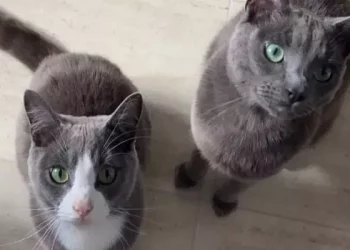If you’re a cat owner planning to fly, you may be wondering whether you can purchase a seat for your feline companion. While most airlines do not allow cats to have their own seat in the cabin, there are several options for traveling with your cat. Understanding the rules, preparing your cat, and choosing the best travel arrangements are all crucial steps in ensuring a smooth flight.
Can I Buy My Cat a Seat on a Plane?
Airline Policies on Flying with Cats
Airline policies for flying with pets vary significantly, so it’s important to check the specific rules of the airline you’re flying with. Many airlines do not allow cats to occupy a seat, but there are exceptions for pets traveling in the cabin. Typically, cats must travel in an approved carrier that fits under the seat in front of you.
Can You Buy a Seat for Your Cat?
The simple answer is no – most airlines do not sell a separate seat for your cat. However, your cat can fly in the cabin with you, provided they are in a proper carrier. The carrier must fit within the specific dimensions set by the airline, usually around 18 inches long, 11 inches wide, and 11 inches high, but these can vary. You will need to check with your airline for their specific size restrictions.
Even though your cat cannot have their own seat, some airlines allow you to purchase an extra seat for your pet’s carrier, especially if the pet is large or you feel more comfortable with them having more space. This option can be useful for larger pets that do not fit comfortably in an under-seat carrier. Keep in mind that the cost of an extra seat is often similar to the price of a human ticket, which may not be worth it depending on your cat’s size and comfort.
Preparing Your Cat for a Flight
Health and Comfort Are Key
Before booking your cat’s flight, it’s important to ensure that your cat is healthy enough to travel. A visit to the vet is recommended to get your cat’s health checked and make sure they are up to date on vaccinations. Ask your vet for advice about any sedatives or medications that might help calm your cat during the flight. In general, it’s not advised to sedate your cat unless specifically instructed by your veterinarian.
Choosing the Right Carrier
The right carrier can make all the difference when flying with a cat. The carrier should be sturdy, secure, and well-ventilated to keep your cat comfortable. Airlines often require soft-sided carriers for in-cabin travel, as they are more flexible and can fit under the seat. Some airlines may allow hard-sided carriers, so be sure to check in advance.
Make sure the carrier is large enough for your cat to stand up, turn around, and lie down comfortably. A small carrier that doesn’t allow your cat to move could lead to stress or discomfort during the flight.
Prepare Your Cat for the Experience
Cats are creatures of habit, and travel can be stressful for them. Before the flight, take your cat on short car trips to get them accustomed to being in a carrier for an extended period. Try to make the experience as comfortable as possible by including familiar items like their favorite blanket, toy, or an item of clothing with your scent.
You may also want to practice crate training, so your cat gets used to staying in the carrier without feeling anxious. Familiarization with the carrier before the flight will help your cat feel less stressed.
Consider Cat Boarding If You’re Not Ready to Fly
When Boarding Is a Better Option
Not every cat is suited to travel, especially if your cat suffers from anxiety or is easily stressed by changes in their environment. If flying with your cat seems too complicated or distressing, you may want to consider cat boarding as an alternative.
Cat boarding facilities are designed to offer a safe and comfortable environment for your pet while you’re away. These facilities usually offer climate-controlled rooms, regular feeding schedules, and playtime. Boarding can be a great option if you are traveling for a long time or simply prefer not to take your cat with you on the plane.
How to Choose the Right Boarding Facility
If you decide to board your cat, choose a facility with a good reputation for safety and cleanliness. Visit the facility ahead of time to ensure it meets your standards. The staff should be friendly, experienced with cats, and knowledgeable about feline health and behavior.
Flying with Your Cat: In-Cabin vs. Cargo
In-Cabin Travel
For most pet owners, flying in the cabin with your cat is the preferred option. In-cabin travel is less stressful for cats as they are close to you, and you can easily check on them throughout the flight. In-cabin travel is also usually more affordable, with airline fees ranging from $50 to $150 per pet, depending on the airline.
Cargo Travel for Cats
Cargo travel, while less common for cats, is an option if your cat is too large to fit under the seat. This option typically involves placing your pet in a large, secure crate and sending them to the cargo hold of the plane. While most airlines take great care in handling animals in cargo, it can be stressful for pets, and the environment can be noisy, cold, and uncomfortable. If you must send your cat via cargo, choose an airline known for excellent pet care and check their policies for transporting animals.
How to Ensure a Smooth Journey for Your Cat
What to Pack for Your Cat’s Flight
Packing for your cat is just as important as packing for yourself. Here’s what you’ll need for your cat’s flight:
- Food and water – Pack enough for the entire trip, as well as a small bowl for water during layovers.
- Litter and tray – Some airlines allow you to carry a small litter box for long flights.
- Medication – If your cat is on any medication, bring the necessary doses for the trip.
- Comfort items – Familiar toys, blankets, or items that smell like home will help calm your cat.
During the Flight: Keeping Your Cat Calm
During the flight, try to remain calm. Cats can pick up on your stress, which may make them more anxious. You should avoid opening the carrier or taking your cat out during the flight, as this could lead to further stress. Keep the carrier in a safe and stable position under the seat, and avoid jostling it.
You can try using calming sprays or treats specifically designed for cats. These can help reduce anxiety during travel. Consult your vet for recommendations on safe and effective products to help your cat stay calm.
After the Flight: Settling Your Cat into Their New Environment
Once you arrive at your destination, it’s important to give your cat time to adjust. Set up a quiet space where they can relax and acclimate to their new surroundings. Offer food, water, and a clean litter box. Cats can be disoriented after travel, so it’s important to give them space to explore and settle in at their own pace.
Is Your Cat Ready for Long-Term Travel?
Flying with your cat can be a great option for short trips, but for longer-term travel, you should consider whether your cat will be comfortable. Some cats are more suited to long trips than others. If your cat experiences severe anxiety or health issues, consult your veterinarian for advice. In some cases, it may be better to leave your cat in a cat boarding facility, where they can be cared for in a familiar and controlled environment.
Conclusion
While buying your cat a seat on a plane is not typically an option, there are still plenty of ways to travel with your feline friend. By understanding the airline’s rules, preparing your cat properly, and considering other options like cat boarding, you can ensure a safe and comfortable trip for both you and your pet. Always prioritize your cat’s comfort and well-being when planning air travel, and take the necessary steps to make the journey as smooth as possible.
Related Topics

























